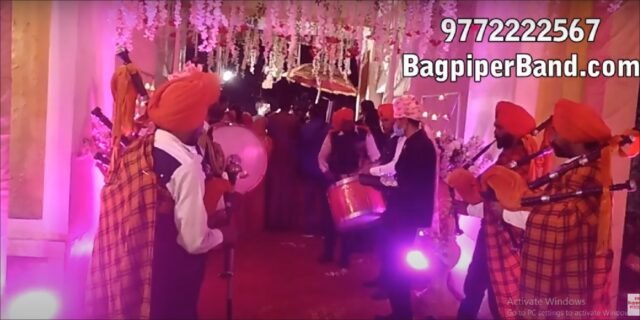Bagpipes About History Types Playing Techniques
Ever heard the soul-stirring wail of bagpipes and felt a shiver down your spine? That bold, haunting sound is like a musical time traveler, carrying tales of ancient battles, joyous weddings, and solemn ceremonies. Bagpipes aren’t just instruments—they’re a cultural phenomenon, from the misty hills of Scotland to the vibrant streets of India. Whether you’re curious about their history, eager to learn the types, or itching to master their playing techniques, this guide’s got you covered. Ready to dive into the world of bagpipes? Let’s unravel their magic, one note at a time!
Introduction to Bagpipes
What Are Bagpipes?
Bagpipes are like musical superheroes, packing a punch with their unique design. At their core, they’re a wind instrument with a bag (leather or synthetic) that you inflate with air. Squeeze the bag, and air flows through a chanter for melodies and drones for that iconic, continuous hum. A blowpipe lets you puff air in, and reeds make the sound come alive. From Scottish Highlands to Indian baraats, bagpipes steal the show with their commanding presence. Think of them as a one-person orchestra, ready to rock any event.
Why Bagpipes Capture Hearts Worldwide
What’s the deal with bagpipes’ global fanbase? It’s their ability to stir emotions—joy, pride, or even tears. Their sound cuts through the noise, making them perfect for celebrations, memorials, or parades. In India, they’re a wedding staple, leading processions with swagger. Their rich history and challenging playstyle add to the allure, like a puzzle that’s tough but oh-so-rewarding to solve. Let’s explore the facts, history, types, and techniques that make bagpipes a musical legend.
Bagpipes About History Types Playing Techniques: The History of Bagpipes
Bagpipes have a backstory that’s as epic as their sound. Let’s travel back in time.
Bagpipes About History Types Playing Techniques: Ancient Beginnings
Bagpipes aren’t some modern invention—they’ve been around for ages, like musical dinosaurs. Historians trace their roots to ancient civilizations, possibly Egypt or Mesopotamia, around 1000 BCE. Early versions used animal bladders or skins as bags, paired with reed pipes. By the Middle Ages, they were jamming across Europe, from Italy to Ireland. These ancient pipes were simpler, but they set the stage for the bagpipes we know today, like the rough draft of a classic novel.
Bagpipes About History Types Playing Techniques: Rise in Scotland
Scotland is where bagpipes became superstars. By the 16th century, the Great Highland Bagpipe (GHB) was the go-to for clans, battles, and feasts. Pipers played to rally warriors or mourn the fallen, making bagpipes a symbol of Scottish pride. The modern GHB, with three drones and a chanter, took shape in the 18th century, becoming the gold standard. It’s like the bagpipe hit the gym, bulking up into the powerful instrument we hear at Highland games and festivals.
Bagpipes About History Types Playing Techniques: Bagpipes in India and Global Spread
Bagpipes didn’t stay in Scotland—they went global, like musical explorers. In India, British colonial bands introduced them in the 19th century, and they stuck around. Today, pipe bands are a hit at North Indian weddings, especially in Punjab and Rajasthan, adding pomp to baraats. Globally, you’ll find bagpipes in Ireland (uilleann pipes), Spain (gaita), and even the Middle East. In India, Meerut and Delhi produce affordable sets (₹4,000-₹15,000), making them accessible for local bands. It’s a worldwide love affair!
Bagpipes About History Types Playing Techniques: Anatomy of a Bagpipe
Before we dive into types and techniques, let’s break down what makes a bagpipe tick.
Bagpipes About History Types Playing Techniques: Key Components
A bagpipe is like a musical puzzle, with each piece playing a vital role. The bag holds air, acting as a reservoir. The chanter, a pipe with finger holes, plays the melody. Drones—longer pipes—add a continuous harmony. The blowpipe is where you blow air in, and reeds inside the chanter and drones vibrate to create sound. Stocks (connectors) tie it all together. Each part needs to be spot-on, or it’s like a car missing a wheel—good luck getting anywhere!
Bagpipes About History Types Playing Techniques: Materials Used in Construction
Bagpipes are a mix of nature and craftsmanship. Pipes are traditionally crafted from hardwoods like African blackwood or rosewood for rich tone, though budget models use plastic. Bags are often leather (sheepskin or cowhide) but increasingly synthetic, like Gore-Tex, for durability in humid places like India. Reeds are made from Arundo donax cane, while mounts and ferrules might be synthetic ivory, metal, or bone. It’s like building a house—every material matters for strength and style.
Bagpipes About History Types Playing Techniques: Types of Bagpipes
Not all bagpipes are the same. Here’s a rundown of the main types you’ll encounter.
Bagpipes About History Types Playing Techniques: Great Highland Bagpipes
The Great Highland Bagpipe (GHB) is the king of bagpipes, known for its loud, commanding sound. It’s the one you hear at pipe band parades or Scottish events. With three drones, a chanter, and a leather or synthetic bag, it’s built for outdoor performances. In India, GHBs cost ₹4,000-₹15,000 and are popular for weddings and school bands. They’re like the rockstars of the bagpipe world—bold and impossible to ignore.
Bagpipes About History Types Playing Techniques: Smallpipes
Want a quieter bagpipe? Smallpipes are your answer. Popular in Scottish and Northumbrian traditions, they’re softer and more melodic, perfect for indoor gigs or solo practice. They can be bellows-blown or mouth-blown, with prices starting at ₹10,000-₹30,000. In India, they’re less common but available through importers like Bajaao. Think of them as the acoustic guitar to the GHB’s electric—gentler but still soulful.
Bagpipes About History Types Playing Techniques: Uilleann Pipes
Ireland’s uilleann pipes are the sophisticated cousins of the GHB. Bellows-blown and played seated, they have a sweeter, more complex sound with extra keys for a wider range. They’re pricier, often ₹50,000+, and rare in India, but enthusiasts can find them via international retailers like Ubuy. Uilleann pipes are like a fine wine—rich, nuanced, and for those who love a challenge.
Bagpipes About History Types Playing Techniques: Other Regional Variations
Bagpipes have cousins worldwide. Spain’s gaita, Brittany’s biniou, and Italy’s zampogna each have unique tones and designs. In India, you might find “Greek” bagpipes (₹148-₹474 on Flipkart), basic models for beginners. These variations show the bagpipe’s versatility, like a dish with different regional spices—same base, different flavors.
Bagpipes About History Types Playing Techniques: Playing Techniques for Bagpipes
Playing bagpipes is like juggling while riding a unicycle—tough but epic. Here’s how it’s done.
Mastering the Basics
First, you need lung power and coordination. Blow air into the bag via the blowpipe, then squeeze to keep a steady flow through the chanter and drones. Your fingers dance on the chanter’s holes to play melodies, while your arm pressure keeps the drones humming. Beginners start with a practice chanter (₹600-₹2,000) to learn fingerwork, like practicing scales before a big concert. It takes 6-12 months to play simple tunes.
Advanced Ornamentation Techniques
Once you’ve got the basics, it’s time to add flair. Techniques like birls (rapid finger rolls), gracings (quick decorative notes), and doublings (double notes for rhythm) make your music pop. Strikes—tapping a hole briefly—add punch. These are like the spices in a curry, turning a plain tune into a flavor explosion. Pros use them in piobaireachd (classical piping) or lively reels for weddings.
Tuning and Maintenance Tips
Tuning bagpipes is like taming a wild horse—tricky but essential. Drones must match the chanter’s pitch (usually A or B-flat), using an electronic tuner (₹1,000-₹3,000) or a keen ear. India’s humidity can mess with reeds, so a moisture control system (₹1,000-₹2,000) is a must. Replace reeds every 3-6 months (₹275-₹8,600) and clean pipes regularly to keep the sound crisp. A well-maintained bagpipe sings like a dream.
Bagpipes About History Types Playing Techniques: Cultural Significance of Bagpipes
Bagpipes aren’t just music—they’re a cultural force.
Role in Scottish Traditions
In Scotland, bagpipes are like the soul of the nation. They’re played at weddings, funerals, and Highland games, carrying centuries of pride. Piobaireachd tells stories through music, while marches like “Scotland the Brave” get crowds cheering. Bagpipes were once war instruments, rallying clans, making them a symbol of courage. It’s like a musical flag, waving Scotland’s heritage high.
Bagpipes in Indian Celebrations
In India, bagpipes bring the party to life. Pipe bands lead wedding baraats in Punjab and Rajasthan, their kilts and sashes adding flair. Schools use them for marching bands, and they shine at Republic Day parades. A mid-range GHB set (₹4,000-₹12,000) is a popular choice, blending Scottish tradition with Indian vibrancy. It’s like adding a royal trumpet to a desi celebration.
Global Cultural Impact
Bagpipes have left their mark worldwide. Ireland’s uilleann pipes star in Celtic music, while Spain’s gaita rocks regional festivals. In pop culture, they’ve appeared in Braveheart and AC/DC’s “It’s a Long Way to the Top.” In India, Bollywood films feature pipe bands for wedding scenes, proving their universal appeal. Bagpipes are like a global anthem, uniting cultures through sound.
Bagpipes About History Types Playing Techniques: Getting Started with Bagpipes
Ready to play? Here’s how to jump in.
Choosing Your First Bagpipe
For beginners, a practice chanter (₹600-₹2,000) is the way to go, letting you learn fingerwork without wrestling a full set. If you’re ready for bagpipes, a rosewood GHB (₹4,000-₹12,000) from IndiaMART or T.R. Musicals is affordable and reliable. Pros might splurge on blackwood sets (₹15,000-₹1,42,000). Choose based on your budget and goals, like picking the right bike for a road trip.
Learning Resources and Costs in India
Finding a teacher in India can be tough, but pipe bands in Delhi or Meerut offer lessons for ₹2,000 per session. Online platforms like Dojo U or YouTube tutorials cost ₹1,000-₹5,000 for courses. Joining a band often includes free group lessons. Budget ₹10,000-₹20,000 annually for lessons and gear, like investing in a new hobby that pays off in skills and fun.
Joining a Pipe Band
Pipe bands are big in India, especially for weddings and school events. Joining one in Punjab or Rajasthan offers community, practice, and sometimes shared instruments. Check IndiaMART for band contacts or visit local schools. It’s like joining a sports team—you learn, bond, and get to show off your skills at big events.
Bagpipes About History Types Playing Techniques: Conclusion
Bagpipes are a musical marvel, weaving history, culture, and skill into every note. From their ancient origins to their starring role in Indian weddings, they’re a testament to the power of sound.
Whether it’s the mighty Great Highland Bagpipe, the gentle smallpipes, or the intricate uilleann pipes, each type has a story to tell. Mastering their techniques is a challenge worth taking, like climbing a musical mountain. Ready to grab a practice chanter or join a pipe band? The bagpipes are calling, ready to lead you on a journey of music and tradition!

Bagpipes About History Types Playing Techniques: FAQs
How long does it take to learn bagpipes?
With daily practice (15-30 minutes), you can play basic tunes on a practice chanter in 6-12 months. Mastering a full set takes 1-2 years, depending on dedication.
What’s the difference between Great Highland Bagpipes and smallpipes?
Great Highland Bagpipes are loud, ideal for outdoor events, costing ₹4,000-₹15,000 in India. Smallpipes are quieter, better for indoors, priced at ₹10,000-₹30,000.
Are bagpipes expensive in India?
Basic rosewood bagpipes cost ₹4,000-₹12,000, while premium blackwood sets can hit ₹1,42,000. Practice chanters are affordable at ₹600-₹2,000 on IndiaMART.
Why are bagpipes so popular in Indian weddings?
Bagpipes add grandeur to baraats, leading processions with bold sound and vibrant uniforms. They’re a cultural hit in Punjab and Rajasthan for festive celebrations.
What’s the hardest part of playing bagpipes?
Coordinating bag pressure, fingerwork, and breathing is toughest, like juggling while running. Tuning drones and mastering ornamentations like birls also take practice.
Tag: Bagpipes About History Types Playing Techniques




